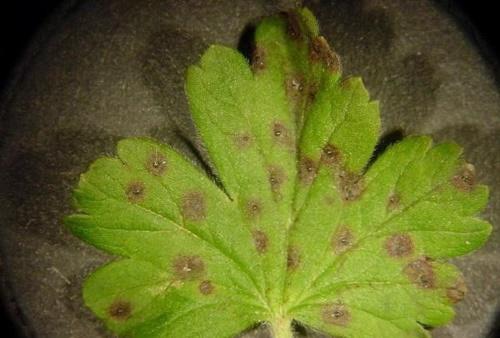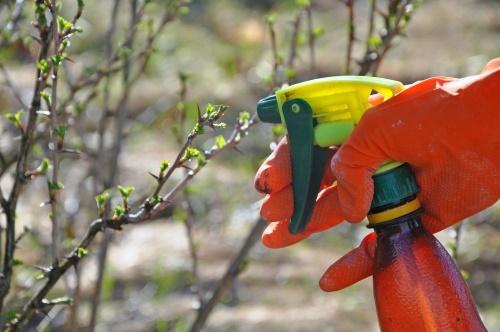Gooseberry anthracnose - determine the disease and save the bush
 All gardeners know the gooseberry scourge and its main disease is powdery mildew. If it appeared on the bush, you can forget about the harvest, because it is impossible to eat the berries covered with bloom. But there is no less dangerous and serious disease - gooseberry anthracnose. It manifests itself mainly on the leaves and shoots, but also affects the yield. Moreover, if the fungus does not act so quickly on currants, then it affects the gooseberry more and spreads faster through the bush. If you do not take action, the plant will not only lose yield in quantity, but may even die altogether. And it will also cause infection of garden crops growing nearby.
All gardeners know the gooseberry scourge and its main disease is powdery mildew. If it appeared on the bush, you can forget about the harvest, because it is impossible to eat the berries covered with bloom. But there is no less dangerous and serious disease - gooseberry anthracnose. It manifests itself mainly on the leaves and shoots, but also affects the yield. Moreover, if the fungus does not act so quickly on currants, then it affects the gooseberry more and spreads faster through the bush. If you do not take action, the plant will not only lose yield in quantity, but may even die altogether. And it will also cause infection of garden crops growing nearby.
How to determine if a gooseberry is affected by anthracnose

- at the initial stage, the leaves are literally covered with small brown specks;
- gradually the spots grow and begin to merge with each other;
- foliage dries up and crumbles, leaves may remain only on the tops of the branches;
- the growth of young shoots is significantly reduced;
- dark ulcer spots appear on old branches.
The highest incidence rate of anthracnose occurs in rainy summers. High temperatures and high humidity contribute to the rapid multiplication of fungal spores. In this case, the mycelium overwinters well on fallen leaves.
Gooseberry anthracnose - measures to combat an insidious disease
 At the first signs of the disease, it is necessary to carefully examine the bush, cut off all the spotted leaves and treat with copper sulfate (40 g of the drug per bucket of water).
At the first signs of the disease, it is necessary to carefully examine the bush, cut off all the spotted leaves and treat with copper sulfate (40 g of the drug per bucket of water).
A good result is obtained by systematic (at least 4 times) treatment of 1% Bordeaux liquid during the entire growing season:
- before flowering;
- after the end of flowering;
- 2 weeks after the second treatment;
- after picking berries.
Instead of Bordeaux mixture, you can use fungicides (Captan, Kuprozan). However, it should be borne in mind that they can be sprayed with a shrub only before bud break and after harvesting.
To prevent anthracnose, it is necessary to remove fallen leaves under the gooseberry bushes in the fall and dig up the soil. It is also imperative to thin out the crown, avoiding thickening. Do not neglect feeding, because a healthy shrub has more chances to resist the disease. You can also pour boiling water over the gooseberries in early spring - this will destroy a significant part of the spores.